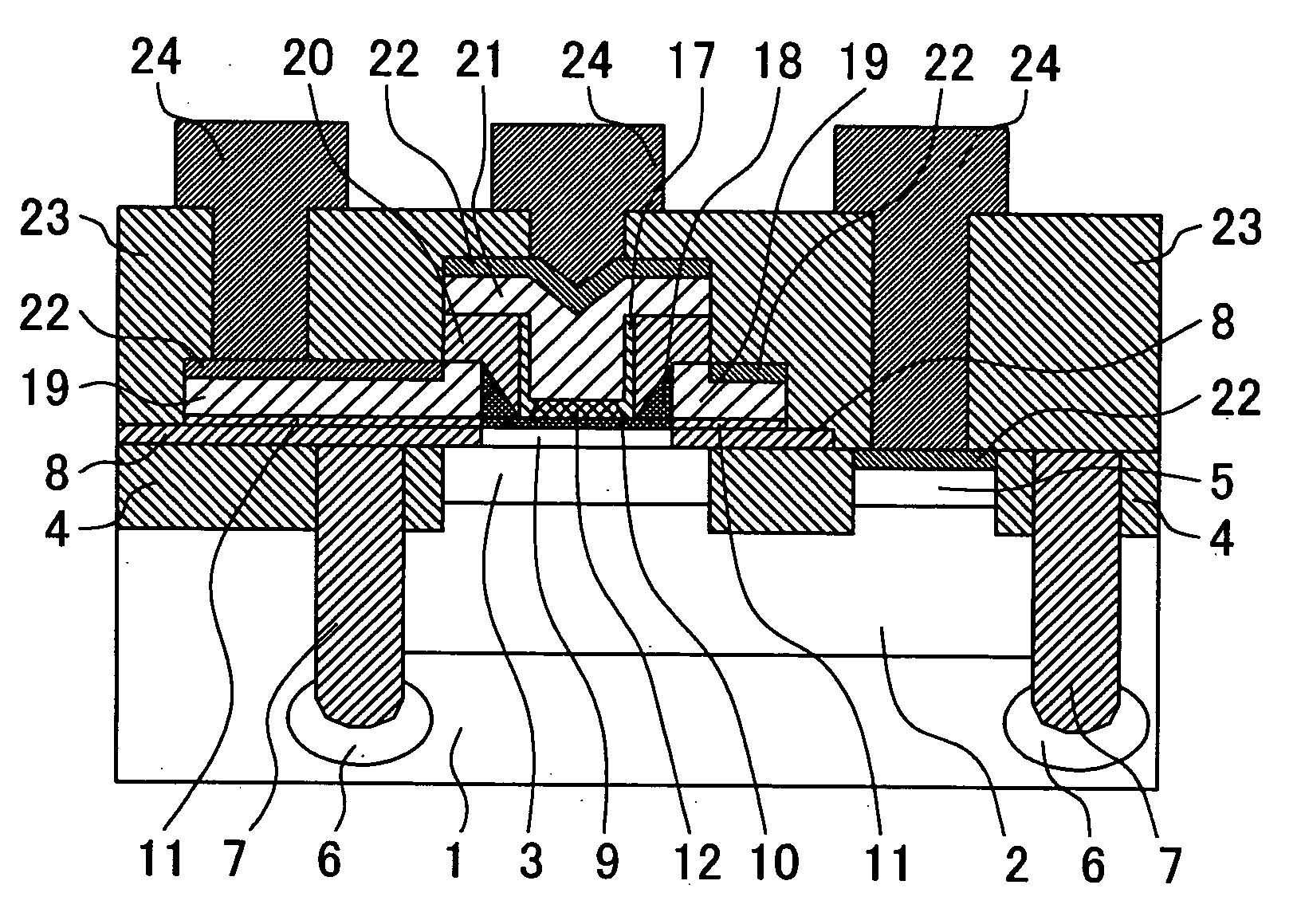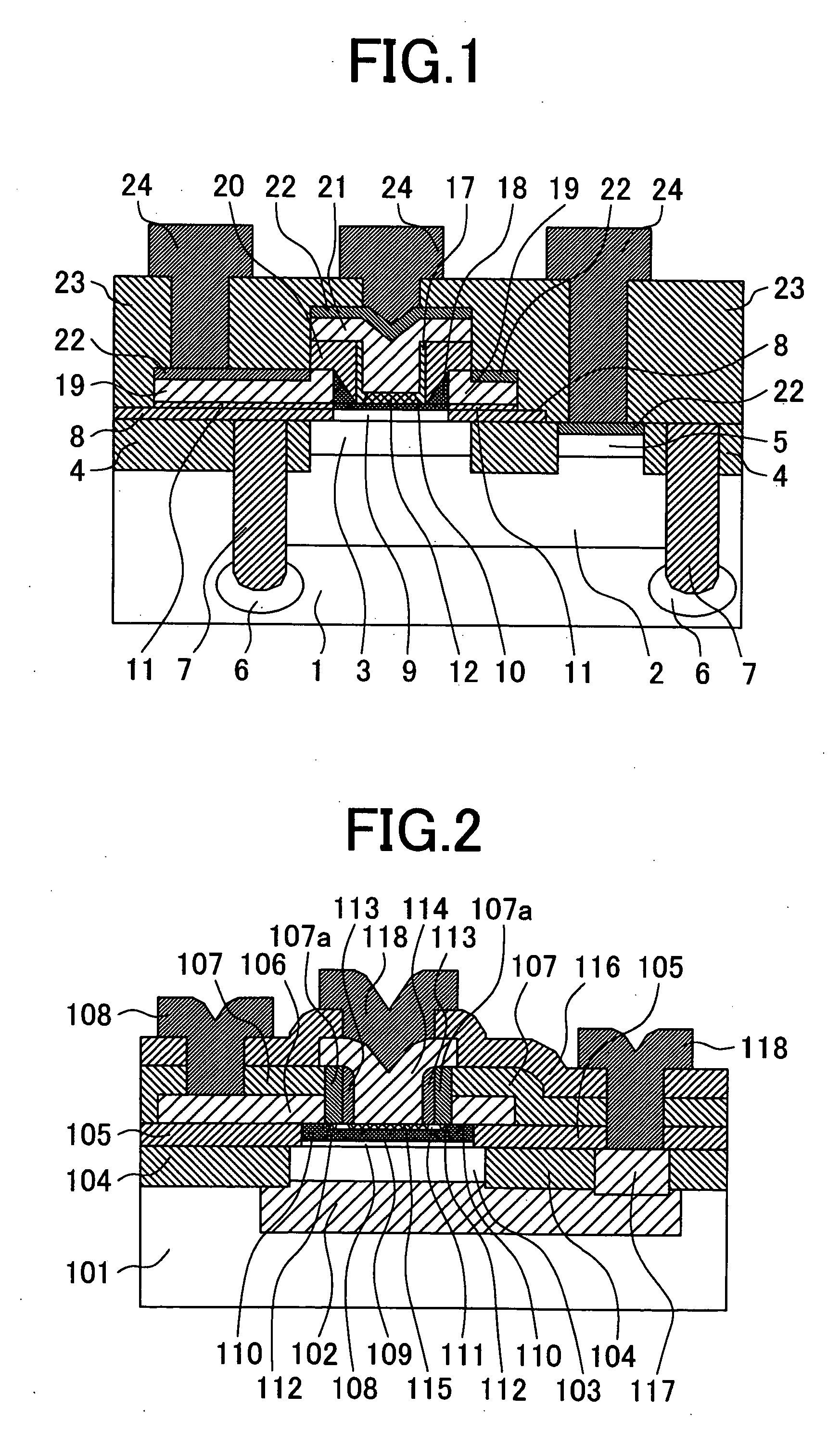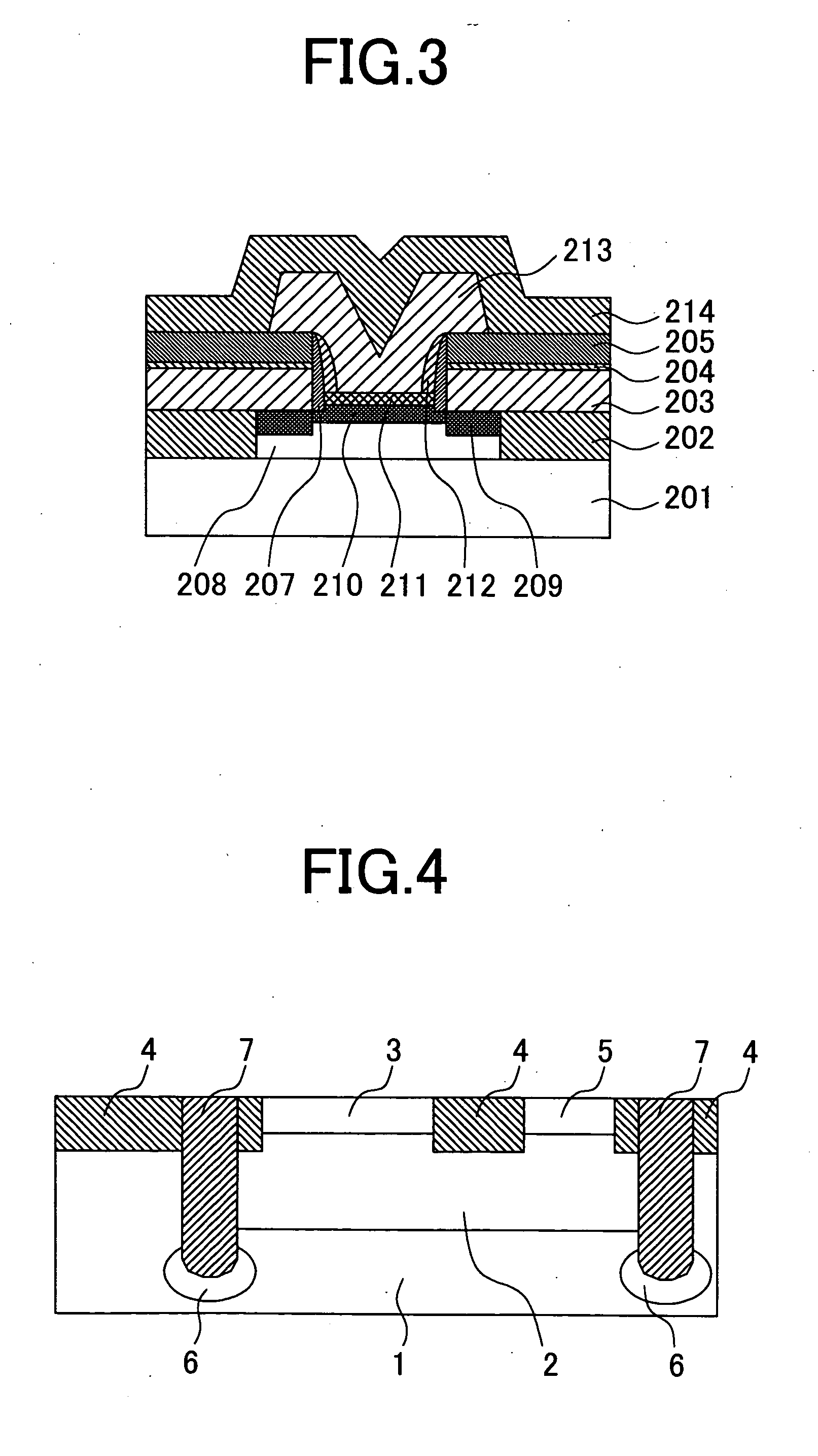Semiconductor device and method for manufacturing the same
- Summary
- Abstract
- Description
- Claims
- Application Information
AI Technical Summary
Benefits of technology
Problems solved by technology
Method used
Image
Examples
first embodiment
[0051]FIG. 1 shows a cross sectional view of a semiconductor device representing a first embodiment of the present invention. In FIG. 1, the reference numerals and symbols are defined as follows; 1 denotes a p-type silicon substrate, 2 denotes a high concentration collector buried layer, 3 denotes a low concentration collector layer, each of 4, 7, 8, 20, and 23 denotes a silicon oxide film, 5 denotes a collector contact layer, 6 denotes a p-type diffusion layer, 9 denotes a single crystal silicon collector layer, 10 denotes a single crystal silicon base layer, 11 denotes a polycrystalline silicon base, 12 denotes an emitter region, 17 denotes a silicon oxide film sidewall, 18 denotes an extrinsic base, 19 denotes a polycrystalline silicon extrinsic base electrode, 21 denotes a polycrystalline silicon emitter electrode, 22 denotes a silicide layer, 24 to 26 denote an emitter electrode, a base electrode and a collector electrode, respectively.
[0052] Hereinafter, a description will be...
second embodiment
[0068]FIG. 12 shows a cross sectional view of a semiconductor device representing a second embodiment of the present invention. In FIG. 12, the same numerals / symbols will be used for the same components as those shown in FIG. 1 and redundant description thereof will be omitted. The bipolar semiconductor device of this second embodiment is provided with a base silicon substrate 31, a silicon oxide film 32, and an n-type silicon layer 33. Those are differences from the configuration of the semiconductor device shown in FIG. 1.
[0069] Hereunder, a description will be given to indicate how to manufacture the semiconductor device of this second embodiment.
[0070] In the method of manufacture of this second embodiment, the substrate to be used first is different from that in the first embodiment. In this second embodiment, a 300 nm silicon oxide film 32 is formed on a base silicon substrate 31, and then a 1000 nm n-type silicon layer is formed thereon. A so-called SOI (Silicon on Insulato...
third embodiment
[0072]FIG. 13 shows a cross sectional view of a semiconductor device representing a third embodiment of the present invention. In FIG. 13, the same numerals / symbols will be used for the same components and a redundant description thereof will be omitted. In the bipolar semiconductor device of this third embodiment, the silicon nitride film 34 is provided. This is a difference from the configuration of the semiconductor device shown in FIG. 1. Hereinafter, a description will be given to indicate how to manufacture the semiconductor device of this third embodiment.
[0073] At first, the structure of the semiconductor device shown in FIG. 4 is obtained according to the manufacturing method described in connection with the first embodiment.
[0074] After the structure shown in FIG. 4 is obtained, a 30 nm silicon oxide film 8 and a 15 nm silicon nitride film 34 are deposited. Then, a photo-resist pattern having an opening that is narrower than the low concentration collector layer 3 is for...
PUM
 Login to View More
Login to View More Abstract
Description
Claims
Application Information
 Login to View More
Login to View More - R&D
- Intellectual Property
- Life Sciences
- Materials
- Tech Scout
- Unparalleled Data Quality
- Higher Quality Content
- 60% Fewer Hallucinations
Browse by: Latest US Patents, China's latest patents, Technical Efficacy Thesaurus, Application Domain, Technology Topic, Popular Technical Reports.
© 2025 PatSnap. All rights reserved.Legal|Privacy policy|Modern Slavery Act Transparency Statement|Sitemap|About US| Contact US: help@patsnap.com



